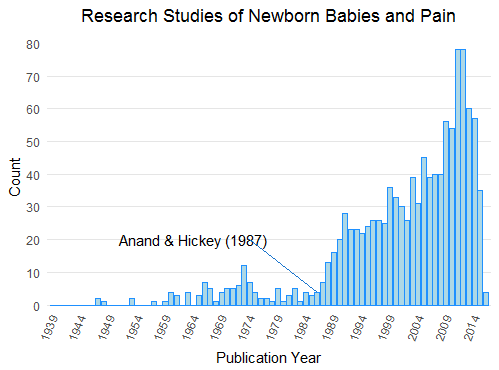Back to: Introduction to Evidence Synthesis
So, a systematic review is a helpful tool, but it’s not a magical process for answering any question. How do you know a systematic review is the best approach for you?
Let’s use a scientific example. The chart below illustrates the number of published research studies about pain management in newborn babies between 1939 and 2016.

You’ll see in this chart that the number of published articles about pain in newborn babies increased rapidly around 1990. This publication trend occurred after an important paper about newborn babies and pain was published in 1987 by Anand & Hickey in the New England Journal of Medicine.
If this were 1986 and we wanted to conduct a systematic review about pain in newborn babies , we wouldn’t have a lot of material to use.
That’s why, before you invest too much time in a systematic review, your first step is making sure there’s enough existing research about the topic you care about. Because if no one has written about your question, or only a few people have written about it, you won’t have enough evidence to synthesize.